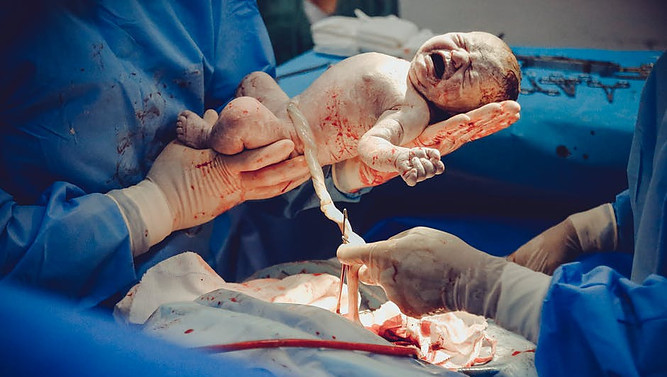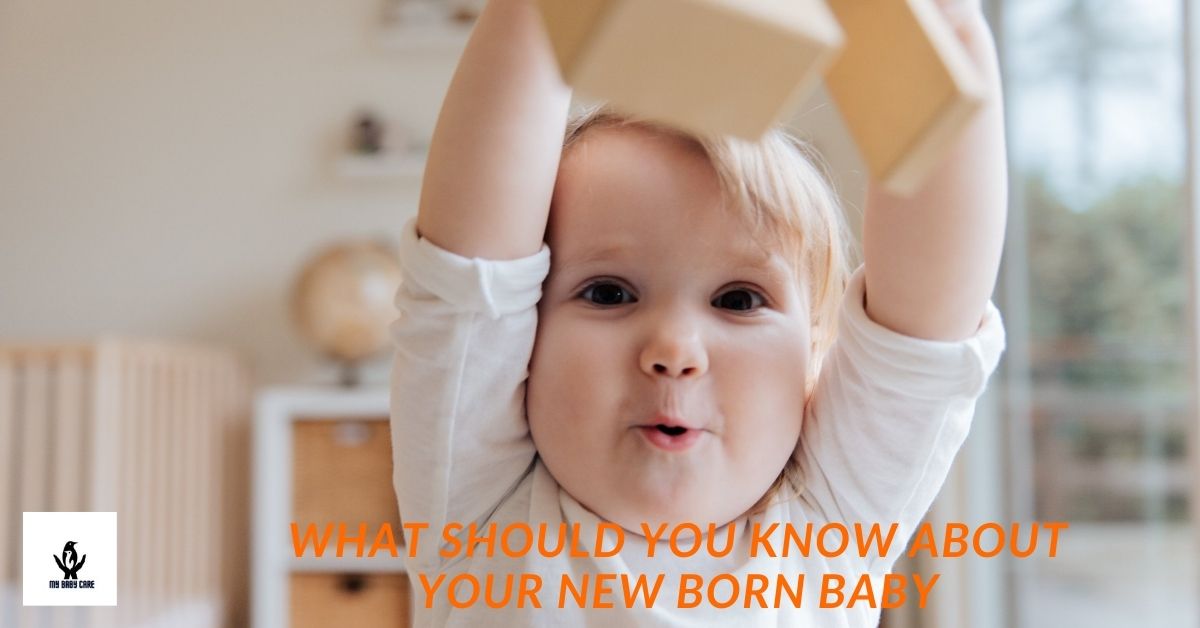The little person you have been expecting for nine months is finally here. If you are a first-time parent sure, you are bound to be a thousand emotions.
You may come across a thousand and one problems. ” why he/she is so crying”? ” why won’t he stop crying?”.” why does he/she have a funny-looking head?” etc.
It is very much essential for you to have an understanding of the newborn baby who invaded your whole life. We know that a newborn baby is a marvelous experience for first-time parents.
So if you have a clear understanding of the basic general things about your newborn baby. It will maximize your preparedness for parenthood and facilitate your child very well.
Table of Contents
1. What are the hospital checkups for the newborn baby
Checkups will take place moments after he/she arrives. you have to get the assistance of your doctor or nurse to check out the following of your baby.
- Check out the airway by suctioning his or her nose
- Clamp the umbilical cord in two places and cut between two clamps.
- Apply antibiotic ointment to eyes to prevent infections
- Weigh baby (Average baby weigh 3.4kgs.95% of baby weigh between 2.5kg-4.5kg )
Few other checkups
- Measure the baby’s length. ( Average baby’s length is 51cm )
- Measure head circumference( Average baby’s 35 cm )Count fingers and toes.
- Hand baby to mother to breastfeed or cuddle.
- Place ID bands on the baby before leaving the delivery room. The Baby’s footprints and mom’s footprints should be taken for future identification purposes.
2. Baby’s doctor will do a complete examination including the following
- Weight, head circumference, length,
- Heart sounds and respiration
- Internal organs such as kidneys, liver, and spleen palpation
- Newborn reflexes.
- Hips for possible dislocations.
- Hands, feet, arms, legs, genitals
- Umbilical stump
- As parents, if you have a mild to moderate understanding of these checkups is very much important to manage these situations effectively.
3. Portrait of a newborn baby born
- New born’s head is too large for his body (it is about one-quarter of the body’s total length.)
- Legs are usually more chicken-scrawny than baby-round.
- The Head may be somewhat molded. Sometimes to the point of being “cone” shaped.
- Newborn hair is particularly non-existent. It may be flat or stand up straight in spikes. When hair is thin, the blood vessels can be seen.
- Their eyes may appear squinty, because of the folds at the inner corners, swelling from delivery ends. Eyes may also be bloodshot from the pressure of the blood.
- The nose may be flattened and the chin may be asymmetrical.
- New born’s skin is thin. Usually, it is pale.
- Both boys and girls have swollen breasts and genitals.
- Most of the newborn features are temporary.
- They are gone within the first few days or few weeks.

4. Reflexes of a newborn baby
Nature sets a few inborn reflexes within newborn babies to ensure their care.
Some of these primitive behaviors occur spontaneously and others occur with actions. some are helpful to the baby for protection from harm and others seem to guarantee that the baby will get fed.
Moro reflex
When startled by a sudden or loud noise or feeling of Moro reflex will cause the baby to extend the legs, arms, fingers, and arch the back. draw the head back, then draw the arms back, fists clenched into the chest. Duration is four to six months.
Babinski reflex
When the soul of a baby’s foot is gently stroked from the heel to toe, the baby’s toes flair upwards, and the feet turn in. Duration is between six months and two years.
Rooting reflex
A newborn whose cheek is gently stroked will turn in the direction of the stimulus, mouth open and ready to suckle this reflex helps the baby locate the breast or bottle and secure a meal. Duration is about there to four months.
Walking or stepping reflex
Held upright on a table or flat surface supported under the arms, a newborn may lift one leg and then the other taking what seem to be “steps”. Duration is variable. typically about two months.
Sucking reflex
A newborn will reflexively suck when the roof of his/her mouth is touched. Duration is present at birth and lasts until two to four months.
Palmer grasping reflex
Touch the palm of your baby’s hand and his/her fingers will curl around and cling to your finger or any object. Duration is three to six months.
Tonic neck reflex
Placed on the back, a young baby will assume a ‘fencing position, head to one side, with arms and legs on that side extended and opposite limbs flexed. Duration is varied a lot.
5. The birth weight and the size of the baby
Like healthy adults, healthy babies can come in all sizes. Like long and lanky, big and bulky, slight and slender.
Most of the time a baby can thank the adults in her life for her birth stats; the laws of genetics dictate that large parents generally have large children and small parents have small children
(though when dad is large and mum is small, the progeny are more likely to follow in mum’s small foot’s steps, at least at birth.)
6. Bonding with the newborn baby
The research found that the mother and baby relationship will be better when the two spend sixteen hours of the first 24 hours in close loving contact.
The close contact may be differed according to the child and the mother’s condition just after the delivery.
But if you facilitate the requirements as much as possible, that is a good thing. This bonding theory brings the child a lot of advantages.
This encounter gives a chance to the mother, father, and baby to bring early contact skin to skin, eye to eye.
Many parents aren’t able to hold their babies immediately after birth due to emergency surgical delivery, or traumatic vaginal delivery as they are having complications and need to provide intensive care management. So in such cases, the mother needs to pay keen attention to her baby later.
Freshly delivered infants come equipped with all their senses. They are capable of making eye contact and even recognizing their mother’s voice.
So this time is a very special get-together with the baby and their parents. So a few moments a parent and baby spend together after birth are very important
They mark only the beginning of the long and complex process of getting to know each other.
7. Sleepiness in newborn baby
Too much sleepiness is not a problem for newborn babies and it is not associated with feeding or socializing skills.
Pronounced drowsiness is a normal newborn pattern. It is a pattern probably given to the baby as a chance to recover from the exhausting work of being born.
Don’t expect your newborn to have too much more stimulating company once 24 hours of sleepiness are over. In the first few weeks of life baby’s two-four, sleeping hours will end with crying. They will rouse to a semi-awake state to eat.
8. Birthmarks
Newborns’ birthmarks can be quite large and quite vibrant. (which often appears not at birth. but rather first few weeks in life.)Birthmarks can be a variety in shapes, colors, and textures.
soft raised strawberry birthmark composed of immature veins’ and capillaries that broke away from the circulatory fetal development. It may rarely be visible at birth but is typically visible suddenly during the first few weeks.
Parents may be tempted to treatments for a very obvious strawberry mark on the face of those who reportedly bleed or become infected or interfere with a function such as vision. Letting it disappear is the best treatment.
Salmon patch
These salmon-colored patches can appear on the forehead, upper eyelid, and around the nose and mouth. They invariably become lighter during the first two years of life, becoming noticeable when the child cries.
Nevus flames
These purplish-red birthmarks can appear anywhere in the body composed of dilated mature capillaries. Normally present at birth as reddish-purple lesions. They don’t fade appreciably over time and can be considered permanent.
Mongolian spots
Blue to gray resembling bruises may turn up on the buttocks or back and sometimes the legs and the shoulders. Nine out of ten children of African, Asian, or Indian descent can be found in this type of Mongolian spot

9. Mouth cysts or spots
The little white bumps on the gums are much more likely to be tiny fluid-filled patches or cysts. These harmless cysts are common in newborns and will soon disappear, leaving gums clear in plenty of time for that first toothless grin.
10. Early tooth
Every once in a while a newborn has a tooth or two when they are born, And these tiny pearly whites may be cute as can be and fun to show off.
They may need to be removed if they are not well anchored in the gums. Such extra-early teeth may be pre-teeth or extra teeth which after they have been removed are been replaced by primary teeth at the usual time.
11. Jaundice
More than half of the babies in the hospitals have begun to yellow by their second or third days not with age but with newborn jaundice.
The yellowing starts with the head and works its way down towards the toes tinting even the whites of the eyes, which comes from an excess of bilirubin in the blood.
The process is the same in black and brown-skinned babies. but the yellowing may be visible in the palms of the hands, soles of the feet, and the whites of the eyes.
Bilirubin, a chemical formed during the normal breakdown of red blood cells is usually removed from the blood by the liver.
But newborns produce more bilirubin than their immature liver can handle.
AS A RESULT, THE BILIRUBIN BUILDS UP IN THE BLOOD causing the yellowish tinge and what is known as normal or physiologic newborn jaundice.
12. Stool color
This is the first shocking discovery you will make in your baby’s nappies during the first few days of a newborn.
Some times after the first twenty-four hours when all the meconium has been passed you will see transitional stools which are dark greenish-yellow and lose some times “seedy ” in texture and may occasionally contain mucus
After three or four days of transitional tools, the baby starts putting out will depend on what you have put into them. It’s breast milk. Sometimes loose, even watery, sometimes seedy, mushy, or curdy
If it is a formula, the stool will be soft and better formed than breastfed babies. The color will be anywhere from pale to yellow to yellowish-brown, light brown, or brown-green.
Conclusion
As parents, we have to pay close attention to the newborn baby. Because it may be a very strange experience for the parents who had their first child.
So If you have a detailed fact about your newborn child that we mentioned and explained above it will be a good advantage and good perforation to this type of situation.
Comment your experience and knowledge regarding the topic below and join us.


ok will do it.you can join now